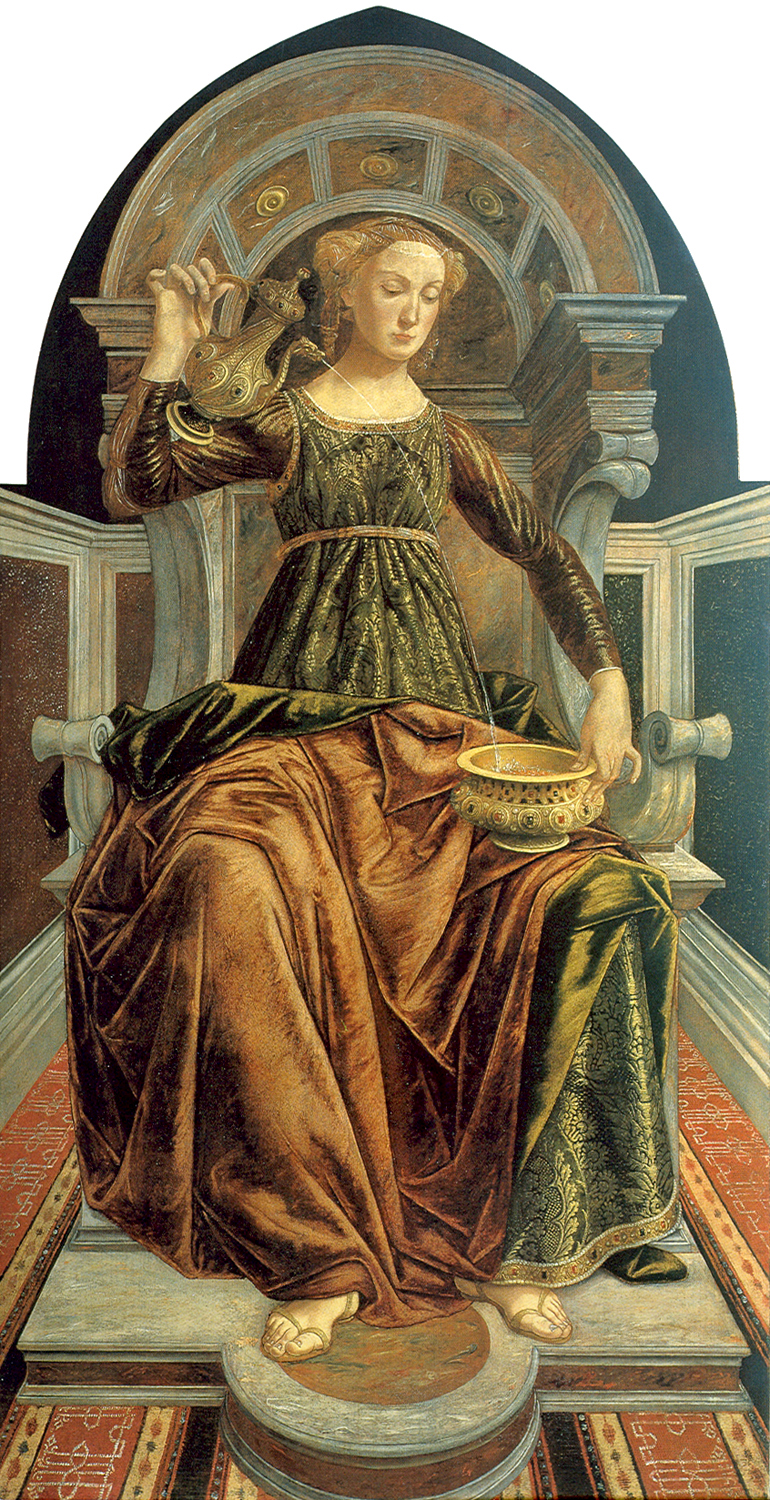|
Chastity
Chastity, also known as purity, is a virtue related to temperance. Someone who is ''chaste'' refrains either from sexual activity considered immoral or any sexual activity, according to their state of life. In some contexts, for example when making a vow of chastity, chastity means the same as celibacy. Etymology The words ''chaste'' and ''chastity'' stem from the Latin adjective ("cut off", "separated", "pure"). The words entered the English language around the middle of the 13th century. ''Chaste'' meant "virtuous", "pure from unlawful sexual intercourse") or (from the early 14th century on) as a noun, a virgin, while ''chastity'' meant "(sexual) purity". Thomas Aquinas links ''(chastity)'' to the Latin verb ("chastise, reprimand, correct"), with a reference to Aristotle's Nicomachean Ethics: "Chastity takes its name from the fact that reason 'chastises' concupiscence, which, like a child, needs curbing, as the Philosopher states". In Abrahamic religions For many Jews, ... [...More Info...] [...Related Items...] OR: [Wikipedia] [Google] [Baidu] |
Sexual Abstinence
Sexual abstinence or sexual restraint is the practice of refraining from some or all aspects of Human sexual activity, sexual activity for medical, psychological, legal, social, financial, philosophical, moral, or religious reasons. Sexual abstinence is distinct from asexuality, which is a sexual orientation where people do not feel sexual attraction. Celibacy is sexual abstinence generally motivated by factors such as an individual's personal or religious beliefs. Sexual abstinence before marriage is required in some societies by social norms, or by law in some countries. It is a part of chastity. Abstinence may be voluntary (when an individual chooses not to engage in sexual activity due to moral, religious, philosophical, or other reasons), an involuntary result of social circumstances (when one cannot find any willing sexual partners), or legally mandated (e.g. in countries where sexual activity outside marriage is illegal, in prisons etc.). History The ancient world disco ... [...More Info...] [...Related Items...] OR: [Wikipedia] [Google] [Baidu] |
Purity Ring
Purity rings (also known as promise rings, abstinence rings, or chastity rings) are rings worn as a sign of chastity. Since the 1990s, in the United States, Christian organizations, especially Catholic and evangelical Christian groups, promoting virginity pledges and virginity before marriage, like True Love Waits and Silver Ring Thing, used the purity ring as a symbol of commitment. Wearing a purity ring is typically accompanied by a religious vow to practice abstinence until marriage. Chastity rings are part of the abstinence-only sex education movement and are intended to act as a physical reminder of their chastity vow. Organizations Silver Ring Thing Unaltered, formerly and commonly known as Silver Ring Thing (SRT), is an American virginity pledge program founded in 1995 by Denny Pattyn. The program encourages teens and young adults to remain sexually abstinent until marriage. For a few years, it was partially funded by the U.S. federal government. Drawing on Christian th ... [...More Info...] [...Related Items...] OR: [Wikipedia] [Google] [Baidu] |
Celibacy
Celibacy (from Latin ''caelibatus'') is the state of voluntarily being unmarried, sexually abstinent, or both, usually for religious reasons. It is often in association with the role of a religious official or devotee. In its narrow sense, the term ''celibacy'' is applied only to those for whom the unmarried state is the result of a sacred vow, act of renunciation, or religious conviction. In a wider sense, it is commonly understood to only mean abstinence from sexual activity. Celibacy has existed in one form or another throughout history, in virtually all the major religions of the world, and views on it have varied. Classical Hindu culture encouraged asceticism and celibacy in the later stages of life, after one has met one's societal obligations. Jainism, on the other hand, preached complete celibacy even for young monks and considered celibacy to be an essential behavior to attain moksha. Buddhism is similar to Jainism in this respect. There were, however, significant cul ... [...More Info...] [...Related Items...] OR: [Wikipedia] [Google] [Baidu] |
Thomas Aquinas
Thomas Aquinas, OP (; it, Tommaso d'Aquino, lit=Thomas of Aquino; 1225 – 7 March 1274) was an Italian Dominican friar and priest who was an influential philosopher, theologian and jurist in the tradition of scholasticism; he is known within the tradition as the , the , and the . The name ''Aquinas'' identifies his ancestral origins in the county of Aquino in present-day Lazio, Italy. Among other things, he was a prominent proponent of natural theology and the father of a school of thought (encompassing both theology and philosophy) known as Thomism. He argued that God is the source of both the light of natural reason and the light of faith. He has been described as "the most influential thinker of the medieval period" and "the greatest of the medieval philosopher-theologians". His influence on Western thought is considerable, and much of modern philosophy is derived from his ideas, particularly in the areas of ethics, natural law, metaphysics, and political theory. ... [...More Info...] [...Related Items...] OR: [Wikipedia] [Google] [Baidu] |
Consecrated Life
Consecrated life (also known as religious life) is a state of life in the Catholic Church lived by those faithful who are called to follow Jesus Christ in a more exacting way. It includes those in institutes of consecrated life (religious and secular), societies of apostolic life, as well as those living as hermits or consecrated virgins/widows. Definition According to the Catechism of the Catholic Church, it "is characterized by the public profession of the evangelical counsels of poverty, chastity, and obedience, in a stable state of life recognized by the Church". The Code of Canon Law defines it as "a stable form of living by which the faithful, following Christ more closely under the action of the Holy Spirit, are totally dedicated to God who is loved most of all, so that, having been dedicated by a new and special title to his honour, to the building up of the Church, and to the salvation of the world, they strive for the perfection of charity in the service of th ... [...More Info...] [...Related Items...] OR: [Wikipedia] [Google] [Baidu] |
Fornication
Fornication is generally consensual sexual intercourse between two people not married to each other. When one or more of the partners having consensual sexual intercourse is married to another person, it is called adultery. Nonetheless, John Calvin viewed adultery to be any sexual act that is outside the divine model for sexual intercourse, which includes fornication. For many people, the term carries an overtone of moral or religious disapproval, but the significance of sexual acts to which the term is applied varies between religions, societies and cultures. In modern usage, the term is often replaced with more judgment-neutral terms like ''premarital sex'', ''extramarital sex'', or ''recreational sex''. Etymology and usage In the original Greek version of the New Testament, the term ''porneia'' (πορνεία – " prostitution") is used 25 times (including variants such as the genitive πορνείας). In the late 4th century, the Latin Vulgate, a Latin translation ... [...More Info...] [...Related Items...] OR: [Wikipedia] [Google] [Baidu] |
Temperance (virtue)
Temperance in its modern use is defined as moderation or voluntary self-restraint. It is typically described in terms of what an individual voluntarily refrains from doing. This includes restraint from revenge by practicing non-violence and forgiveness, restraint from arrogance by practicing humility and modesty, restraint from excesses such as extravagant luxury or splurging, and restraint from rage or craving by practicing calmness and self-control. Temperance has been described as a virtue by religious thinkers, philosophers, and more recently, psychologists, particularly in the positive psychology movement. It has a long history in philosophical and religious thought. In classical iconography, the virtue is often depicted as a woman holding two vessels transferring water from one to another. It is one of the cardinal virtues in western thought found in Greek philosophy and Christianity, as well as eastern traditions such as Buddhism and Hinduism. Temperance is one of the si ... [...More Info...] [...Related Items...] OR: [Wikipedia] [Google] [Baidu] |
Adultery
Adultery (from Latin ''adulterium'') is extramarital sex that is considered objectionable on social, religious, moral, or legal grounds. Although the sexual activities that constitute adultery vary, as well as the social, religious, and legal consequences, the concept exists in many cultures and is similar in Christianity, Judaism and Islam. Adultery is viewed by many jurisdictions as offensive to public morals, undermining the marriage relationship. Historically, many cultures considered adultery a very serious crime, some subject to severe punishment, usually for the woman and sometimes for the man, with penalties including capital punishment, mutilation, or torture. Such punishments have gradually fallen into disfavor, especially in Western countries from the 19th century. In countries where adultery is still a criminal offense, punishments range from fines to caning and even capital punishment. Since the 20th century, criminal laws against adultery have become controversi ... [...More Info...] [...Related Items...] OR: [Wikipedia] [Google] [Baidu] |
Confraternities Of The Cord
Confraternities of the Cord are pious associations of Christians, the members of which wear a cord, girdle or cincture in honour of a saint whom they wish to honour and emulate. Background In the early Church virgins wore a cincture as a sign and emblem of purity, and hence it has always been considered a symbol of chastity as well as of mortification and humility. The wearing of a cord or cincture in honour of a saint is of very ancient origin, and we find the first mention of it in the life of St. Monica. In the Middle Ages cinctures were also worn by the faithful in honour of saints, though no confraternities were formally established, and the wearing of a cincture in honour of Saint Michael was general throughout France. Later on, ecclesiastical authority set apart special formulae for the blessing of cinctures in honour of the Most Precious Blood, of Our Lady, of Saint Francis of Paola, and Saint Philomena. Confraternities had their beginnings in the early Middle Ages, and ... [...More Info...] [...Related Items...] OR: [Wikipedia] [Google] [Baidu] |
Masturbation
Masturbation is the sexual stimulation of one's own genitals for sexual arousal or other sexual pleasure, usually to the point of orgasm. The stimulation may involve hands, fingers, everyday objects, sex toys such as vibrators, or combinations of these. Mutual masturbation is masturbation with a sexual partner, and may include manual stimulation of a partner's genitals ( fingering or a handjob), or be used as a form of non-penetrative sex. Masturbation is frequent in both sexes and at any age. Various medical and psychological benefits have been attributed to a healthy attitude toward sexual activity in general and to masturbation in particular. No causal relationship is known between masturbation and any form of mental or physical disorder. In the Western world, masturbation in private or with a partner is generally considered a normal and healthy part of sexual enjoyment. Masturbation has been depicted in art since prehistoric times, and is both mentioned and discussed in ... [...More Info...] [...Related Items...] OR: [Wikipedia] [Google] [Baidu] |
Seven Deadly Sins
The seven deadly sins, also known as the capital vices or cardinal sins, is a grouping and classification of vices within Christian teachings. Although they are not directly mentioned in the Bible, there are parallels with the seven things God is said to hate in the Book of Proverbs. Behaviours or habits are classified under this category if they directly give rise to other immoralities. According to the standard list, they are Hubris, pride, greed, wrath, envy, lust, Gluttony#Christianity, gluttony and sloth (deadly sin), sloth, which are contrary to the seven heavenly virtues, seven capital virtues. This classification originated with the Desert Fathers, especially Evagrius Ponticus. Evagrius' pupil John Cassian with his book ''The Institutes'' brought the classification to Europe, where it became fundamental to Catholic confessional practices as documented in penitential manuals, sermons such as "The Parson's Tale" from Chaucer's ''The Canterbury Tales, Canterbury Tales'' ... [...More Info...] [...Related Items...] OR: [Wikipedia] [Google] [Baidu] |
Christian Views On Marriage
From the earliest days of the Christian faith, Christians have honored ''holy matrimony'' (as Christian marriages are referred to) as a divinely blessed, lifelong, monogamous union between a man and a woman. According to the Episcopal Book of Common Prayer (1979), reflecting the traditional view, "Christian marriage is a solemn and public covenant between a man and a woman in the presence of God," "intended by God for their mutual joy; for the help and comfort given one another in prosperity and adversity; and, when it is God's will, for the procreation of children and their nurture." However, while many Christians might agree with the traditional definition, the terminology and theological views of marriage have varied through time in different countries, and among Christian denominations. Many Protestants consider marriage to be a sacred institution or "holy ordinance" of God. Roman Catholics and Eastern Orthodox Christians consider marriage as a holy sacrament or sacred myst ... [...More Info...] [...Related Items...] OR: [Wikipedia] [Google] [Baidu] |









